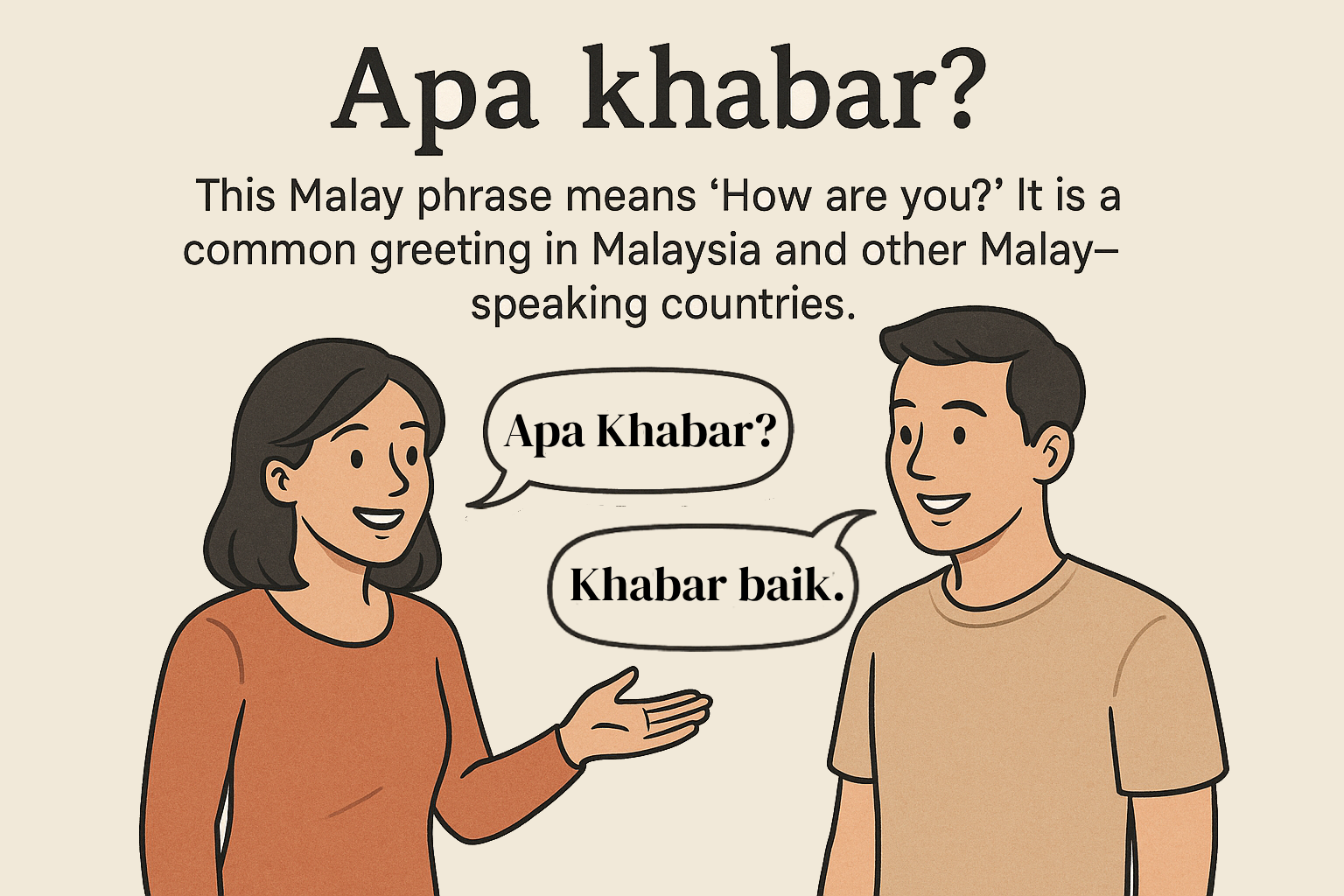A1 - Basic greetings and introductions in Malay
Apa khabar?
"Apa khabar?" you could question to find out how someone is doing. This informal and pleasant welcome is popular in Malaysia, from marketplaces to professional settings. While it directly translates to 'What news?' it is translated as 'How are you?'
Example:
- Apa khabar?
- Khabar baik. (I'm doing well.)

The Fascinating Journey of "Apa" and "Khabar"
Imagine stepping into a bustling market in ancient Southeast Asia. The air is filled with the aroma of spices, and the chatter of traders and locals fills your ears. Among the myriad of languages spoken, you hear a familiar word: "Apa?" This simple question, meaning "what," has a rich history that spans thousands of years and connects diverse cultures across the globe.
The Roots of "Apa"
"Apa" originates from the Proto-Austronesian language, the ancestor of many languages spoken in Southeast Asia, the Pacific Islands, and even as far as Madagascar. Over time, as people migrated and cultures evolved, "apa" took on slight variations but retained its core meaning. In modern Malay and Indonesian, "apa" is still used to ask "what." In Tagalog, spoken in the Philippines, it evolved into "ano," and in Malagasy, the language of Madagascar, it became "inona." Despite the distances and differences, these words share a common ancestor, reminding us of the interconnectedness of human language and culture.
The Story of "Khabar"
Now, let's travel to the Middle East, where the word "khabar" (خبر) has been used for centuries to mean "news" or "information." As Islam spread through trade routes and cultural exchanges, Arabic words like "khabar" found their way into many languages, including Malay. In the bustling ports of Southeast Asia, traders from Arabia shared not just goods but also their language and culture. "Khabar" became a part of the Malay vocabulary, enriching it with a new way to convey information and stories.
While some might think "khabar" has roots in Sanskrit due to similar-sounding words like "katha" (कथा), which means "story," the influence here is predominantly Arabic. The interplay of Arabic and Malay languages reflects the rich tapestry of cultural exchange that has shaped Southeast Asia over centuries.
A Language of Connection
Learning Malay is not just about mastering grammar and vocabulary; it's about diving into a world where languages and cultures have intertwined for millennia. Words like "apa" and "khabar" are more than just sounds—they are threads that connect us to a global narrative of human migration, trade, and cultural exchange. So, the next time you ask "Apa khabar?" (What's the news?), remember that you're tapping into a linguistic heritage that spans continents and centuries.
Common Greetings in Malay
- Good morning: Selamat pagi.
- Good afternoon: Selamat tengahari.
- Good evening: Selamat petang.
- Good night: Selamat malam.
- Bye bye: Selamat tinggal.
- See you again: Jumpa lagi.
Practice Tips
- Try using "Apa khabar?" with friends or colleagues.
- Practice the common greetings at different times of the day.
- Role-play different scenarios to get comfortable with the phrases.
Selamat belajar! (Happy learning!)